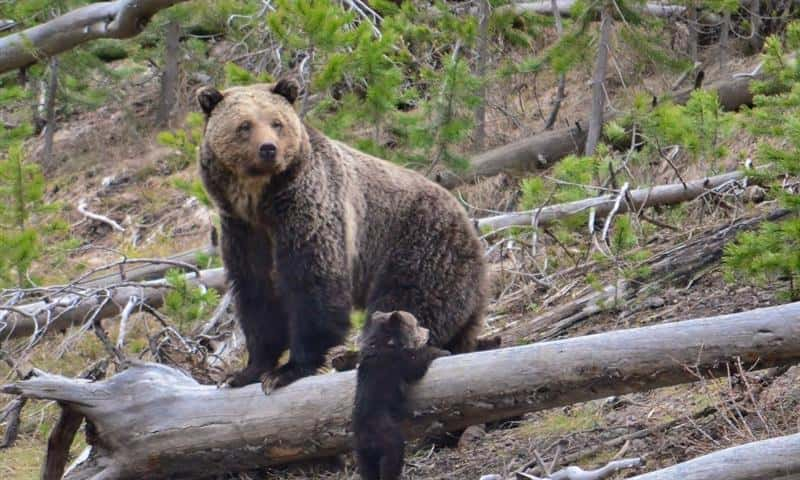WASHINGTON, D.C. – It was nearly 42 years ago, on July 28, 1975, that the US Fish and Wildlife Service listed the grizzly bear in the lower 48 states as “threatened,” in part, because the species was reduced to only about 2{43a21437b022293ea22983a65937d7e18883fb2ff2b11e03a1041d36bd400603} of its former range south of Canada.
In 1975, Five or six small populations were thought to remain, totaling 800 to 1,000 bears. The southernmost—and most isolated—of those populations was in greater Yellowstone, where 136 grizzly bears were thought to live in the mid-1970s.
Due to the success of conservation efforts and collaboration among a variety of stakeholders, U.S. Secretary of the Interior Ryan Zinke announced on Thursday, June 22 ,that the Yellowstone population of the grizzly bear has been recovered to the point where federal protections can be removed and overall management can be returned to the states and tribes. The population now meets all the criteria for delisting.
“As a kid who grew up in Montana, I can tell you that this is a long time coming and very good news for many communities and advocates in the Yellowstone region,” said Secretary Zinke. “This achievement stands as one of America’s great conservation successes; the culmination of decades of hard work and dedication on the part of the state, tribal, federal and private partners. As a Montanan, I’m proud of what we’ve achieved together.”
The Greater Yellowstone Ecosystem (GYE) Distinct Population Segment (DPS) consists of portions of northwestern Wyoming, southwestern Montana and eastern Idaho. Grizzly bear populations outside of this DPS in the lower 48 states will be treated separately under the ESA and will continue to be protected.
The GYE grizzly bear population is one of the best studied bear populations in the world thanks to the longstanding efforts of the Interagency Grizzly Bear Study Team (IGBST). Population and habitat monitoring efforts undertaken by the IGBST indicate that GYE Grizzly Bears have more than doubled their range since the mid-1970s. They now occupy more than 22,500 square miles, an area larger than the states of New Hampshire, Massachusetts and Connecticut combined. Stable population numbers for grizzly bears for more than a decade also suggest that the GYE is at or near its capacity to support grizzly bears. This decision by the U.S. Fish and Wildlife Service (USFWS) was informed by over four decades of intensive, independent scientific efforts.
The GYE grizzly bear population was determined to be recovered because multiple factors indicate it is healthy and will be sustained into the future. These factors include not only the number and distribution of bears throughout the ecosystem, but also the quantity and quality of the habitat available and the states’ commitments to manage the population from now on in a manner that maintains its healthy and secure status.
In addition to this final rule, the USFWS will also release a final supplement to the 1993 Grizzly Bear Recovery Plan for the Yellowstone Grizzly Bear population. The Conservation Strategy that describes management of the grizzly bear following delisting was finalized by the Yellowstone Ecosystem Subcommittee of the IGBC in December of 2016. That document can be found here: http://igbconline.org/wp-content/uploads/2016/03/161216_Final-Conservation-Strategy_signed.pdf
The final rule, and the supporting documents, will publish in coming days in the Federal Register and the rule will take effect 30 days after publication.
More information:
https://www.fws.gov/mountain-prairie/es/grizzlyBear.php
https://www.nps.gov/yell/learn/nature/bearesa.htm
Source: U.S. Department of Interior


